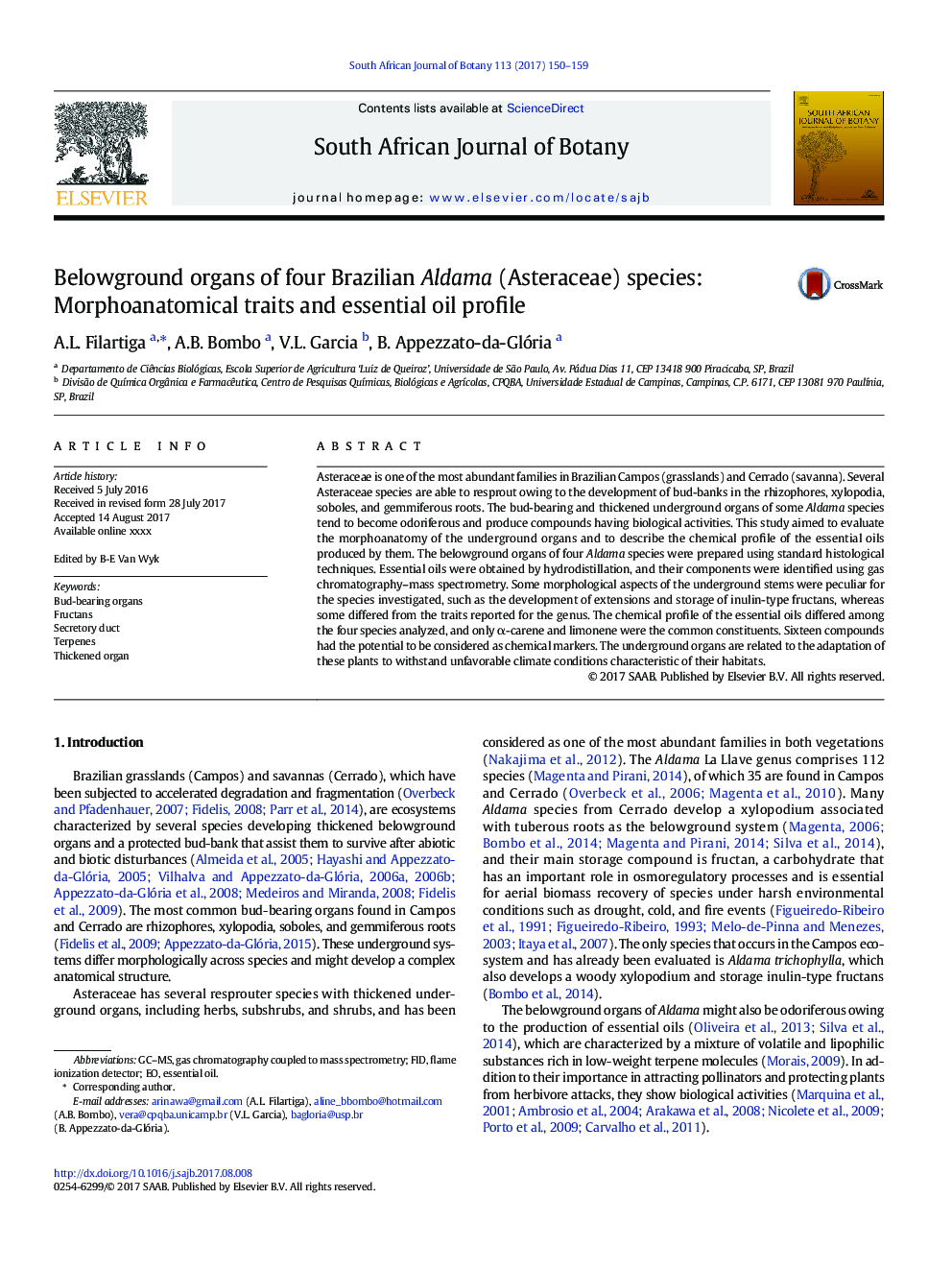| کد مقاله | کد نشریه | سال انتشار | مقاله انگلیسی | نسخه تمام متن |
|---|---|---|---|---|
| 5762901 | 1625145 | 2017 | 10 صفحه PDF | دانلود رایگان |
عنوان انگلیسی مقاله ISI
Belowground organs of four Brazilian Aldama (Asteraceae) species: Morphoanatomical traits and essential oil profile
دانلود مقاله + سفارش ترجمه
دانلود مقاله ISI انگلیسی
رایگان برای ایرانیان
کلمات کلیدی
موضوعات مرتبط
علوم زیستی و بیوفناوری
علوم کشاورزی و بیولوژیک
علوم زراعت و اصلاح نباتات
پیش نمایش صفحه اول مقاله

چکیده انگلیسی
Asteraceae is one of the most abundant families in Brazilian Campos (grasslands) and Cerrado (savanna). Several Asteraceae species are able to resprout owing to the development of bud-banks in the rhizophores, xylopodia, soboles, and gemmiferous roots. The bud-bearing and thickened underground organs of some Aldama species tend to become odoriferous and produce compounds having biological activities. This study aimed to evaluate the morphoanatomy of the underground organs and to describe the chemical profile of the essential oils produced by them. The belowground organs of four Aldama species were prepared using standard histological techniques. Essential oils were obtained by hydrodistillation, and their components were identified using gas chromatography-mass spectrometry. Some morphological aspects of the underground stems were peculiar for the species investigated, such as the development of extensions and storage of inulin-type fructans, whereas some differed from the traits reported for the genus. The chemical profile of the essential oils differed among the four species analyzed, and only α-carene and limonene were the common constituents. Sixteen compounds had the potential to be considered as chemical markers. The underground organs are related to the adaptation of these plants to withstand unfavorable climate conditions characteristic of their habitats.
ناشر
Database: Elsevier - ScienceDirect (ساینس دایرکت)
Journal: South African Journal of Botany - Volume 113, November 2017, Pages 150-159
Journal: South African Journal of Botany - Volume 113, November 2017, Pages 150-159
نویسندگان
A.L. Filartiga, A.B. Bombo, V.L. Garcia, B. Appezzato-da-Glória,